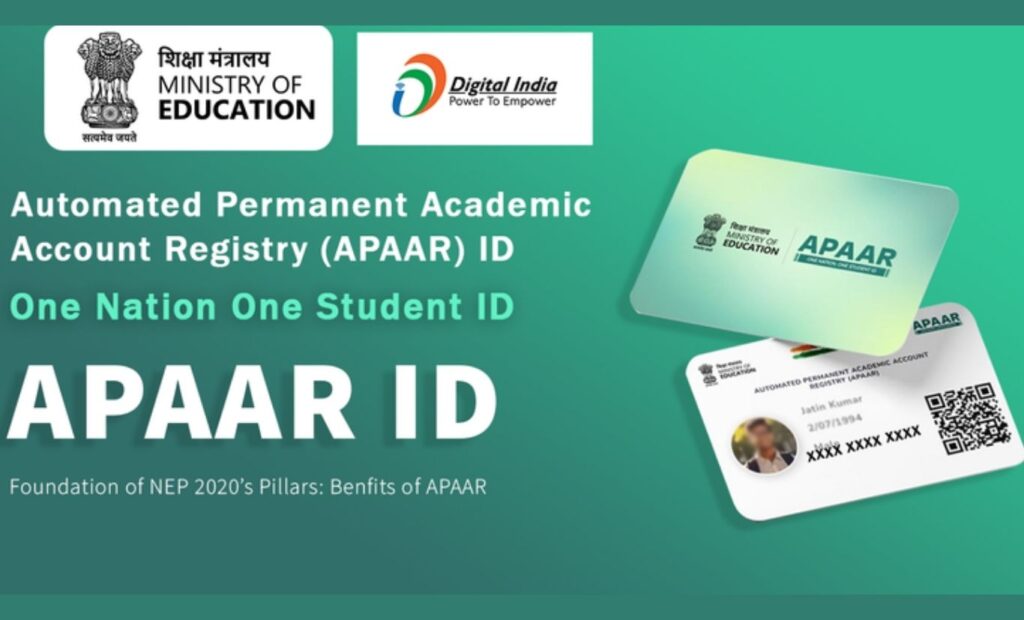APAAR ID: A Digital Milestone in Education, But Privacy Concerns Persist

APAAR ID: A Digital Milestone in Education, But Privacy Concerns Persist
New Delhi: As India accelerates its digital transformation, the education sector is witnessing a significant shift with the introduction of the APAAR ID, a key component of the “One Nation, One Student ID” initiative. Designed to streamline student data management, this initiative aims to enhance academic transparency, mobility, and efficiency. However, concerns regarding data privacy, security, and regulatory oversight remain pressing issues, particularly for minors.
What is APAAR ID?
The Automated Permanent Academic Account Registry (APAAR) is a 12-digit unique digital ID assigned to every student in India, akin to a PAN card for taxpayers. Inspired by the National Education Policy (NEP) 2020, APAAR seeks to provide seamless academic mobility, multidisciplinary learning, and lifelong education.
Key Features:
- Comprehensive Academic Record: Maintains a digital record of a student’s curricular, co-curricular, and extracurricular achievements.
- Integration with DigiLocker: Links with the Academic Bank of Credits (ABC) for secure storage and easy access to verified academic documents.
- Multiple Applications: Facilitates admissions, scholarships, skill certifications, job applications, and credit transfers.
- Aadhaar-Linked Access: Ensures authentication through Aadhaar, with records available via DigiLocker.
Benefits of APAAR ID
- Streamlined Student Portfolio: APAAR consolidates all academic records into a single digital profile, reducing reliance on physical documents and simplifying access for educational and employment purposes.
- Supports NEP 2020 Goals: Enables credit-based, multidisciplinary, and flexible learning by integrating with ABC, allowing students to accumulate and transfer credits across institutions.
- Simplified Verification: Helps institutions and employers verify credentials instantly, reducing the prevalence of fraudulent academic records.
- Economic and Administrative Efficiency: Reduces costs related to issuing and verifying certificates while promoting skill portability, crucial for the gig economy and Skill India Mission.
- Data-Driven Education Policies: Provides real-time insights into student demographics, dropout rates, and skill gaps, aiding policy formulation and improving educational outcomes.
- Global Recognition: Aligns with UNESCO’s Global Education Monitoring framework, facilitating international student mobility and academic recognition.
- Efficient Scholarship and Aid Distribution: Enhances transparency and efficiency in government welfare programs by ensuring targeted financial aid distribution.
Challenges and Concerns
Despite its advantages, APAAR has raised several concerns among privacy advocates, educators, and parents.
1. Data Privacy Risks for Minors:
- The linkage with Aadhaar raises legal concerns, given the Supreme Court’s 2018 ruling that Aadhaar cannot be mandatory for school enrollment.
- The Digital Personal Data Protection (DPDP) Act 2023 mandates parental consent for processing children’s data, which is often not explicitly obtained during bulk registrations in schools.
2. Cybersecurity Vulnerabilities:
- APAAR integrates with DigiLocker, ABC, and the National Academic Depository (NAD), making it a potential target for cyberattacks.
- The lack of transparency regarding data ownership and security measures raises fears of misuse by third parties, including EdTech companies.
3. Absence of Legal Framework:
- Unlike Aadhaar, which has statutory backing under the Aadhaar Act (2016), APAAR lacks a dedicated legal framework, leading to regulatory ambiguity.
4. Consent and Transparency Issues:
- The consent process is often unclear, with many registrations conducted without informing parents properly or in a language they understand.
- There is no clear mechanism to revoke consent or delete a student’s data once enrolled.
5. Concerns Over Student Surveillance:
- Parents and activists worry about the potential for academic profiling and EdTech surveillance, leading to discriminatory practices.
6. Institutional and Technological Barriers:
- Many schools, particularly in rural areas, lack the infrastructure to implement APAAR effectively.
- Teachers report increased administrative burdens and errors in data entry, impacting the accuracy of records.
Way Forward: Ensuring Safe and Effective Implementation
To address these concerns, experts suggest several measures:
- Legal Safeguards:
- Enact a dedicated APAAR Act to establish clear guidelines on voluntary participation, consent management, and data privacy protections.
- Privacy by Design:
- Implement data minimization and end-to-end encryption to enhance security.
- Maintain auditable access logs and allow students to control data visibility.
- Parental and Student Control:
- Introduce real-time dashboards for parents to monitor and restrict access to student data.
- Provide granular visibility settings for students, similar to social media privacy controls.
- Promoting Digital Inclusion:
- Conduct awareness campaigns in regional languages.
- Appoint Data Protection Officers (DPOs) in every district to oversee implementation and address grievances.
- Independent Oversight and Accountability:
- Establish an Independent Data Protection Board to audit APAAR’s operations.
- Ensure APAAR data is subject to Right to Information (RTI) provisions for greater transparency.
The APAAR ID has the potential to revolutionize education by creating a unified academic identity system, aligning with India’s broader digital initiatives such as Digital India, Bharat Stack, and NEP 2020. However, lessons from Aadhaar’s implementation highlight the need for strong legal safeguards, transparent governance, and active public discourse to prevent misuse. A well-balanced approach can ensure that APAAR serves as an enabler of education rather than a tool for surveillance, paving the way for a secure and inclusive digital learning ecosystem.












